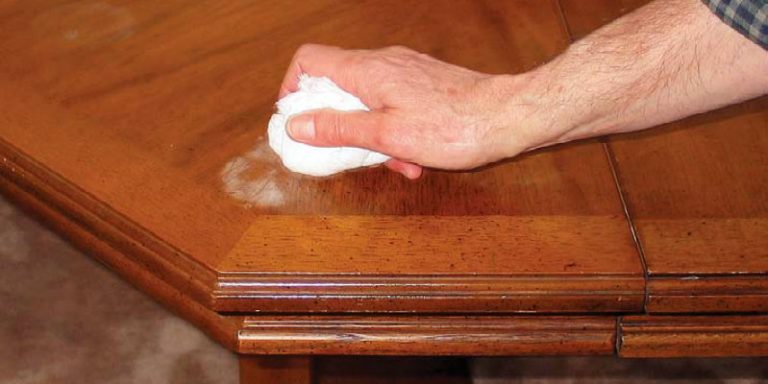
Your home is a reflection of your lifestyle, a place where comfort, organization, and cleanliness come together to create a sanctuary. However, maintaining a clean and orderly home requires a bit more than a once-over with a broom or an occasional wipe down of surfaces. Two critical elements that can significantly enhance your home’s upkeep are creating an efficient cleaning schedule and mastering stain removal techniques. Both can transform your living space into a gleaming, well-organized environment. In this article, we will explore how you can elevate your home with the power of a cleaning schedule and expert stain removal.
The Power of a Cleaning Schedule
A cleaning schedule is the backbone of maintaining a tidy home. Without a plan in place, clutter and dirt accumulate gradually, making cleaning feel like an insurmountable task. A structured schedule helps ensure that everything gets cleaned at the right time, maintaining both cleanliness and order without overwhelming you. It also provides a sense of routine and consistency that can prevent your home from slipping into chaos.
Why a Cleaning Schedule Is Essential
1. Reduces Stress and Procrastination Many people procrastinate when it comes to cleaning because the task seems too overwhelming. A schedule breaks down the chores into manageable chunks, allowing you to focus on one thing at a time. When you know exactly when and what you’re supposed to clean, the anxiety of an all-day cleaning marathon evaporates. By tackling small tasks regularly, you avoid letting clutter and dirt pile up, making the overall process more efficient.
2. Ensures Consistency A cleaning schedule ensures that every area of your home receives attention. High-traffic zones like the kitchen and bathroom might need daily cleaning, while others, like the guest room or attic, can be cleaned on a weekly or monthly basis. Without a schedule, you might neglect certain areas for weeks or even months, which leads to a buildup of dirt and clutter that becomes harder to clean.
3. Time-Saving By scheduling cleaning tasks, you also prevent spending hours on unexpected and unplanned cleaning marathons. When tasks are evenly spread out, you’ll be able to manage time effectively, leaving you with more free time to enjoy your home and personal activities. Furthermore, having a set schedule minimizes the need for last-minute panic cleaning when you have guests arriving.
How to Create an Effective Cleaning Schedule
Creating an effective cleaning schedule requires an understanding of your space, your needs, and the level of time you can devote to upkeep. Start by assessing the areas that need attention. Some areas might need daily cleaning, while others may only need to be addressed weekly or monthly. Here’s a simple breakdown:
Daily Tasks
-
Wipe down kitchen counters and sinks after each meal.
-
Load or empty the dishwasher.
-
Sweep or vacuum high-traffic areas.
-
Tidy up the living room and bedrooms.
-
Make the bed and arrange pillows.
Weekly Tasks
-
Deep clean the bathroom (toilets, bathtubs, mirrors).
-
Vacuum or mop all floors, especially in the living room and dining areas.
-
Dust surfaces in common rooms and bedrooms.
-
Change bed linens and towels.
-
Clean out the refrigerator, discarding any expired food.
-
Wipe down kitchen appliances (microwave, oven, etc.).
Monthly Tasks
-
Clean windows and window sills.
-
Wash light fixtures and ceiling fans.
-
Vacuum and clean upholstery (couch cushions, chairs).
-
Clean behind and under large furniture (like the couch or fridge).
-
Declutter your home, organizing drawers, cabinets, and storage spaces.
Seasonal Tasks
-
Deep clean carpets or rugs.
-
Wash walls, baseboards, and vents.
-
Clean gutters and outdoor spaces.
By breaking down tasks in this way, you ensure that your home remains in top shape with minimal stress. The key is consistency—if you stick to your schedule, cleaning will become second nature.
Mastering Stain Removal: A Must for a Pristine Home
Even with a diligent cleaning routine, stains are inevitable. Whether it’s coffee spilled on the couch, red wine on the carpet, or grease splatters on your favorite shirt, stains can be a nightmare. Mastering stain removal is an art, and with the right techniques and products, you can keep your home looking flawless.
Understanding Stain Types
To effectively remove a stain, it’s important to understand the type of stain you’re dealing with. Stains generally fall into one of these categories:
-
Protein-based stains: These come from substances like blood, sweat, eggs, or dairy. They require cool water and enzymatic cleaners for removal.
-
Tannin-based stains: These come from tea, coffee, wine, and fruits. They respond best to acidic cleaners like vinegar or lemon juice.
-
Oil-based stains: These come from grease, lipstick, butter, and lotions. A solvent-based cleaner or dishwashing detergent is most effective.
-
Dye-based stains: These come from ink, markers, or artificial dyes. They may require a stain remover specifically designed for dyes or a mixture of baking soda and vinegar.
Stain Removal Methods for Different Surfaces
Each type of stain and surface requires a slightly different approach. Below are some key techniques for tackling stains on common household items.
1. Carpet and Upholstery
-
General Method: Start by blotting (not rubbing) the stain with a clean cloth to absorb as much of the spill as possible. Always work from the outside in to prevent spreading. For wine stains, mix equal parts white vinegar and water, then blot the area until the stain lifts. For grease, sprinkle baking soda over the area to absorb the oil, then vacuum.
-
Pet Stains: If you have pets, stains from urine, feces, or vomit are common. Use a solution of white vinegar, water, and baking soda to neutralize odors and clean the area. Enzyme cleaners are also highly effective in breaking down the proteins in pet waste.
2. Clothing and Fabrics
-
Protein Stains: For blood or sweat stains, rinse the fabric with cold water first. Then apply an enzymatic stain remover and let it sit for 15-30 minutes before washing. Avoid using hot water, as it can set the protein stain.
-
Tannin Stains: For coffee or tea stains, blot the area with a mixture of white vinegar and water. If the stain persists, apply a paste made from baking soda and water, then wash.
-
Oil Stains: For grease stains, sprinkle baking soda on the area to absorb the oil, or apply dishwashing detergent directly to the stain and scrub gently before washing.
-
Ink Stains: For ink or marker stains, blot the area with rubbing alcohol or hand sanitizer on a cloth. Be careful not to spread the stain; dab only the affected area.
3. Hardwood Floors
-
General Method: For food spills, wipe the area immediately with a damp cloth. For persistent stains, mix water with a few drops of dish soap and rub gently with a soft cloth. Avoid soaking the floor, as too much water can warp the wood.
-
Grease Stains: Use a mild solvent like rubbing alcohol to remove grease without damaging the finish.
4. Kitchen Surfaces
-
Stains on Countertops: For granite, marble, or quartz, avoid acidic cleaners that could damage the surface. Instead, use a gentle dish soap solution or a cleaner specifically designed for stone. For stubborn food stains, mix baking soda and water into a paste, apply it to the stain, and let it sit for a few minutes before wiping clean.
-
Grease Stains: Use dishwashing detergent for grease splatters on stovetops or countertops. For stubborn grease, a solution of vinegar and baking soda works wonders.
Conclusion: Clean and Maintain with Purpose
Improving your home through an organized cleaning schedule and mastering stain removal techniques is a game-changer. A cleaning schedule brings order to your home, reducing stress and ensuring that each space is consistently maintained. On the other hand, stain removal skills help you keep your home looking pristine, even in the face of unavoidable accidents.
Together, these two strategies help you create an environment that is not only cleaner but healthier and more enjoyable. Consistency is key—whether you are tidying up on a daily basis or tackling stains as they occur, a well-organized approach can make all the difference in turning your home into a sanctuary. So, invest time in your schedule, arm yourself with the right tools for stain removal, and watch your home transform into a cleaner, more vibrant place to live.
You May Also Like
How to Improve Your Home wit ...
03 April 2025
How to Improve Your Stain Re ...
07 February 2025
The Beginner’s Guide to De ...
07 January 2025
Popular Post
Expert Insights on Installing Solar Power Systems
28 October 2025Local Plumbing Expertise You Can Trust in Killeen
22 August 2025Innovative Solutions for Refurbishing Commercial Spaces
14 August 2025How to Improve Your Home with Valuation and Agents
30 April 2025Recent Posts
- Expert Insights on Installing Solar Power Systems October 28, 2025
- Local Plumbing Expertise You Can Trust in Killeen August 22, 2025
- Innovative Solutions for Refurbishing Commercial Spaces August 14, 2025
- How to Improve Your Home with Valuation and Agents April 30, 2025
- The Beginner’s Guide to Design in Home Improvement April 24, 2025
- How to Improve Your Home with Maintenance and Repair April 16, 2025
- Why Your Roofing Strategy Needs a Flat Roof April 10, 2025
Archives
- October 2025 (1)
- August 2025 (2)
- April 2025 (10)
- March 2025 (2)
- February 2025 (7)
- January 2025 (8)
- December 2024 (6)
- November 2024 (6)
- October 2024 (6)
- September 2024 (5)
Categories
- Cleaning & Maintenance (5)
- Gardening & Outdoor (5)
- Home Decor (5)
- Home Improvement (5)
- HVAC (5)
- Moving (5)
- Plumbing (6)
- Real Estate & Property (5)
- Roofing (6)
- Smart Home (6)





